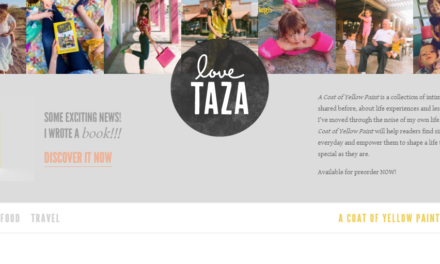
NOVEMBER 15, 2024
5 things to do
Don’t Throw a Curve Ball
Some entrepreneurs think PR involves sending a press release to media outlets and calling it a day.
That would be a mistake. Seeing public relations as a strategy only to get media coverage is limiting and likely to end in disappointment.
Instead, widen your definition of PR and become an expert at guesting for podcasts, blogs, and more. It will expand your reach and may help optimize your content for higher rankings in search results.
Successful creator Neil Patel, who created QuickSprout, says guest blogging is the best inbound marketing strategy.
But how do you make the pitch to be a guest author or speaker? I offer these five things to do based on my review of hundreds of pitches for guest blogging and my experience in landing guest appearances:
1. Do your research: Your pitch should show how you can help or entertain their audience. To do that well, you must research their content. What is their content tilt? Who is likely to consume that content? How can you address that?
You also should look at their formats. All too often, requests for guesting opportunities are sent when no guesting opportunities exist. If they don’t have explicit instructions for guest inquiries, look at their podcast episode lineup to see if they host guests or examine their blog to see if they have multiple bylines.
2. Make the first paragraph count. Just as you write or speak to attract an audience at the beginning of your content piece, craft an opening paragraph that grabs the recipient’s attention.
Don’t do this:
Hi Editor,
My name is Inky Bean. I have over 10 years of writing experience. I would like to write an article for your blog that will benefit your audience …
Do this:
Hi Ann,
Your audience wants to know how to make money from their content business. I have an idea for an article on how they could do that.
The “do” example works better because it relates to the recipient. I don’t care about knowing the sender’s name or how long they’ve been writing. I care about how well they can deliver content that will resonate with The Tilt audience. (And by using my name rather than a generic title, I know the person did some homework.)
2. Establish your credibility: In a sentence or two, explain why you are the person who should contribute to their content.
Don’t do this:
I have a bachelor’s degree in creative writing and have written articles for 10 years on a wide range of topics. I also have five years of experience working for an agency that serves creators.
Do this:
As a professional in the creator industry for over five years, I have seen first-hand the challenges creators face. They’re skilled at creating the content but not in figuring out how to monetize it. I’ve written several articles on the creator economy for well-known outlets, including Fast Company, Insider, and others (links included below), but I have a fresh idea for your audience.
The “do” version shows the recipient that the requesting potential guest is credible on the subject matter and has been recognized by other outlets for that expertise.
3. Give options: Suggest a few ideas that you could write on or speak about. Be specific.
Don’t do this:
I can provide content or speak on a multitude of topics. Let me know what topics you’d like to see me do, and I can put together some ideas.
Do this:
I could write an article about how creators can repackage their free content into products they can charge for. Or if that idea doesn’t fit, here are some other revenue-focused ideas:
- How to add a consulting practice to your content business
- How to create social media ads to sell more content products
- How to make the first dollar as a content entrepreneur
I’m open to the possibility if you have a different idea you’d like to see me execute.
In the “do” version, the sender adds specificity so the recipient can easily see the potential contributions are relevant to their audience. The last sentence also indicates the sender’s flexibility.
4. Own the process: While accepting the request is ultimately the recipient’s decision, you can still close the pitch by taking control of the interaction.
Don’t do this:
If you’re interested in having me write for the publication, reply to this email, and I’ll get started.
Do this:
Thanks for your time in reviewing this guest request to provide helpful content to your audience. I will follow up next week to see what questions you have or what topic might work best for you. Of course, if you prefer to connect earlier, please let me know.
The “do” closing indicates the potential guest blogger will follow up. They aren’t just sitting back and waiting for a reply. It also helps the recipient see that they can expect another email if they don’t reply now.
And one final thing to do: No pitch formula works all the time. Sometimes, you throw it across the plate, and it goes wild. You may get a no or no reply at all. Just focus on the yes replies. Learn what works most frequently – and what doesn’t – and adjust your outreach. Just be sure to keep throwing out pitches.
– Ann Gynn
Want to be another way to build your audience? Speak at CEX 2025. Call for Speakers is now open through Dec. 1, 2024. Submit your proposal today!
tilt publishing book club
- Take a selfie … Growth of self-published books with ISBNs beats down traditionally published titles. [Publishers Weekly]
- Think before publishing … Would sensitivity readers have prevented chef-author Jamie Oliver’s children’s book from being withdrawn from bookstores? [ABC News]
- Give credit … The author is the primary but not the only one who deserves credit for going from an idea to a published book, says a former publishing editorial assistant. [Literary Hub]
5 things to know
Money
-
Creator cut: The newly launched Spotify for Creators allows eligible creators to earn money from podcast audio ads based on engagement and next year to gain revenue based on how much the video is streamed by Premium users. [Podnews]
Tilt Take: “Eligible” is the key – and it’s a big mountain to climb. Eligible means creators with at least 12 episodes (not hard), 2K unique Spotify users (harder) and 10K hours streamed (hardest) in the last month.
Audiences
-
All ages: YouTube and Facebook are the only platforms used by at least half of US adults aged 30 and older. New research from Pew reveals US social media habits by age, gender, household income, education level, and more. [Pew Research]
Tilt Take: Dig into the research to learn the specifics around your audience’s demographics. -
Bye tradition: New research finds 77% of social media users prefer influencer content over traditional ads, and 85% trust influencers over celebrities, according to IZEA’s Trust in Influencer Marketing Report. [IZEA]
Tilt Take: Also noteworthy, Instagram and TikTok are quickly gaining traction as top sources for product research – doubling activity since 2022.
Tech and Tools
-
Don’t forget: YouTube will automatically add a reminder to subscriber feeds a day ahead of a creator’s scheduled Shorts or livestream. [Social Media Today]
Tilt Take: A reminder is good. Not sure if 24 hours is sufficient; we’d love to see reminders an hour or two before, too.
And Finally
-
Patreon present: Patreon has added a gifting option. Fans can gift memberships of any tier or duration. Creators can give freebie memberships and offer discounts and sales. [The Verge]
Tilt Take: We like the idea of sales because they give your audience a limited time to receive the benefit, so they’re more likely to take action now.
5 things from the tilt
- Tilt Your Business, a weekly podcast for content creators and entrepreneurs, starts at 4 p.m. US EST Tuesday (Nov. 19).
- The decisions we make in the next few weeks to few months can change our lives and the lives of the people around us for the better. (Content Inc.)
- Joe and Robert answer secret questions in this special edition. (This Old Marketing)
- Matt and Lauren review the important metrics you need to be tracking to boost your book sales, grow your brand, and connect with a loyal audience. (Publish & Prosper)
- ICYMI: How To Turn Your Notes From a Conference Into an Action Plan
Get more of the Full Tilt stories on TheTilt.com.
Know a content creator who’s going full tilt? DM us or email [email protected].
Want to advertise on The Tilt? Go here.
Or email us at [email protected].
Was this email forwarded to you? Get your own sub here.
Copyright ©2024 Lulu Press, Inc. All rights reserved.
Update your preferences | Unsubscribe | PO Box 12018, Durham, NC 27709





